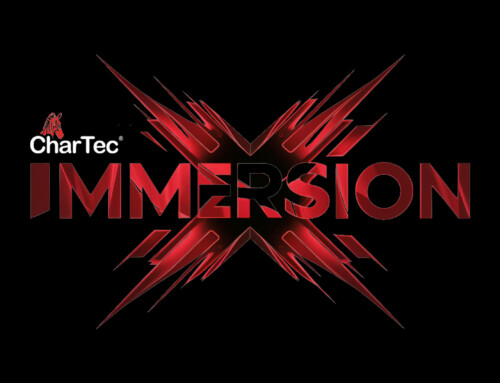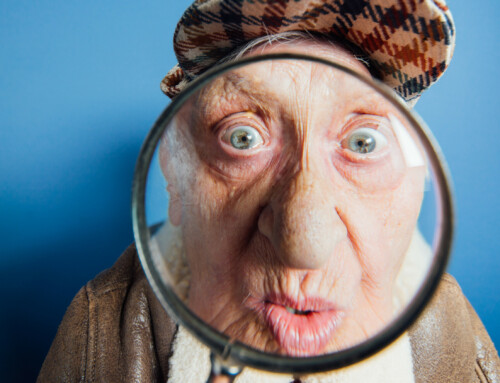If there’s one tool that can completely transform MSP sales management, it’s DISC. This simple metric has many uses. It can identify the most effective salespeople in a group of applicants. Salespeople can find the best way to connect to prospects and close deals. And Sales Managers will know which applicants are hunters and which are farmers.
DISC is a topic that CharTec is passionate about, and you should be too. If you walk up to anyone here at CharTec and ask them what their DISC profile is, they will be able to tell you not only their own but also those of their co-workers.
Knowing who you are dealing with allows you to avoid misunderstandings, both the big ones that can lead to workplace drama and the smaller ones that slowly erode good working relationships. It helps people know how to ask others on the team for something and how best to tackle conflicts. Poor internal communication is a top cause of conflict within companies, and the DISC model can help you find the best way to communicate.
The DISC model has been around since the 1930s, and it’s one of the most-used instruments to describe human behavior. It identifies four behavior styles – D, I, S, and C – that can help define the ways people will react to any given situation.
Of course, humans are complex, and you cannot fully distill each person into one of just four categories. Everyone will have a bit of all of these. However, their dominant style is the main one you need to be concerned with – and you might be surprised just how effective this system can be.
Breaking down the elements of DISC
DISC can be applied in every stage of the selling process, from lead generation and first contacts to meetings, closings, and follow-ups.
Here’s a look at the four personality types described by the DISC model.
Dominant
D refers to a dominant style. A high D tries to dominate situations and overcome the obstacles in their path. Challenge-driven, ambitious, and goal-oriented, they are the people you want to see in sales positions. High Ds are known to be powerful, innovative, energetic, and absolute.
A low D, in contrast, will be cautious, agreeable, and passive. This characteristic may be good in some job roles, but it’s not what you want to see in a salesperson.
Influential
The I in DISC refers to Influence, and high I’s tend to be those on your team who are strong in friendly environments. These are people who want to share their opinions and use friendly persuasion to do so. They are chiefly concerned with being accepted, understood, and involved, and they place a lot of weight on their relationships with others.
High I’s are great in positions where clients need to be engaged regularly. Like high D, a high I is a good quality in a salesperson. Similarly, you do not want a low I to be in a customer-facing role like dispatch.
Steady
A person with an S style likes to maintain order and seek safety. Calm and loyal, they prefer not to change their environment; they know what works and want to stick with it.
While this is great in some roles, it may work against you in others. For example, a person in sales with a high D and a high S will be nearly impossible to teach. A low S will be far more open to change.
Compliant
A strong C analyzes situations carefully before making a decision. Fact-seeking, systematic, reflective, and knowledgeable, C’s don’t feel like they have much influence on their own and will instead use preexisting structures and rules to reach their goals.
Techs tend to have higher C as they are the ones who are used to following processes. It’s a useful characteristic for many roles, but sales is not usually one of them. A low C, on the other hand, who thinks outside of the box, can be useful on a sales team.
Salespeople can leverage DISC
In sales, this model shows how to communicate with different types of people in the most efficient way to maximize the odds of success. Most salespeople instinctively sell to their personality type rather than thinking about the personalities of their customers. A good salesperson understands DISC thoroughly and can adapt their behavior and communication style to suit it.
Managers who are trained in DISC believe they can read people and determine their DISC profile based on how they sit in their chairs listening to them speak. It’s a useful skill to have. A salesperson who can do this will always know the best way to speak the prospect’s language, so to speak.
For example, they’ll know that high D’s will be influenced by others with high status or power, while you can reach high I’s by asking about what they are thinking and feeling. A sales pitch to an S shouldn’t feel transactional; these individuals want to feel valued and listened to. You’ll want to give a high C as much information as possible while offering guarantees or refunds of some sort to help ease their worries.
How DISC can help sales managers
Another useful thing about DISC is that it can show you who your doers and thinkers are.
You might see a pattern emerging among your best performers, and this can be used to guide future hiring decisions. While having more of the same could lead to greater success, you also want a team that represents all aspects of DISC to some degree so you have people who can tackle any situation.
It also helps managers to spot future leaders. You can see which individuals within your various departments take on more work and who are ready for a challenge. Finding these people, nurturing them, and ensuring they are satisfied can lead to achievements for your company. The ability to spot the genius around you is what elevates leaders – and DISC can shed light on this as few other metrics can. Have questions about DISC? Contact us today, we can help guide you in the right direction.
If you want to request a DISC Assessment for yourself or an employee, click here.







Leave A Comment